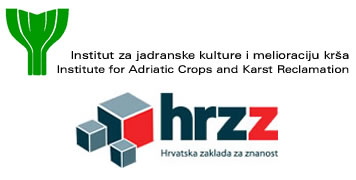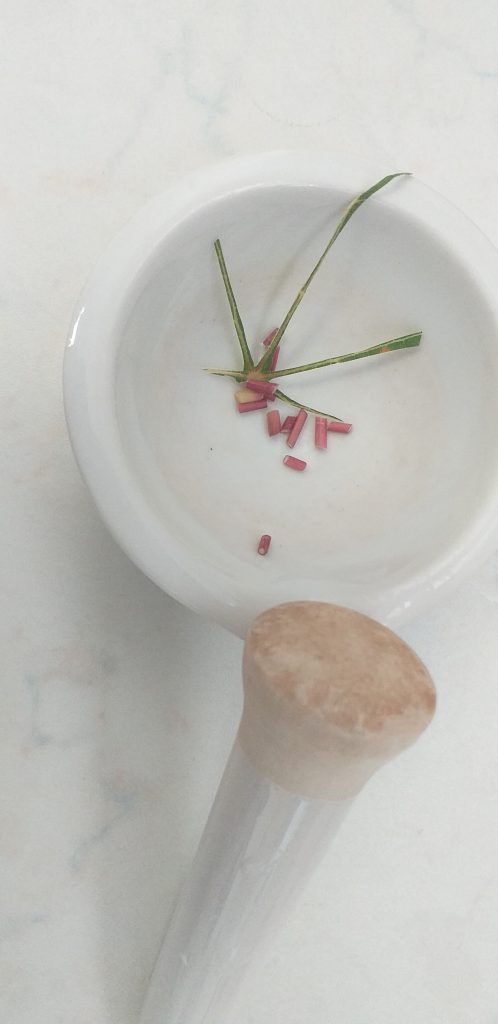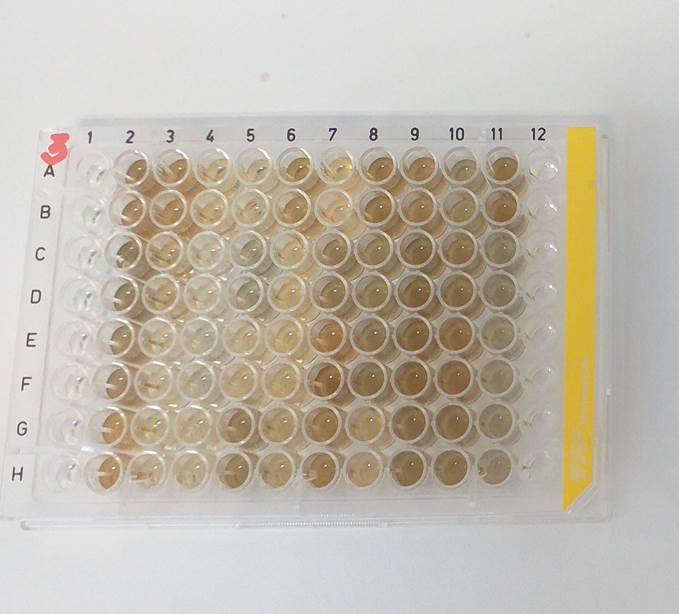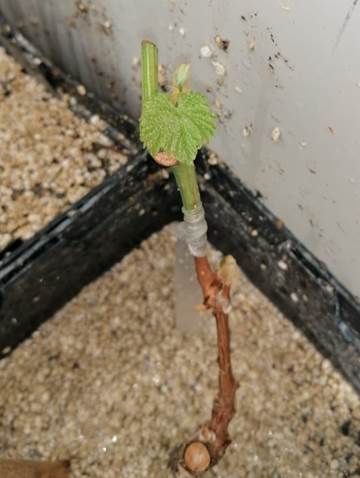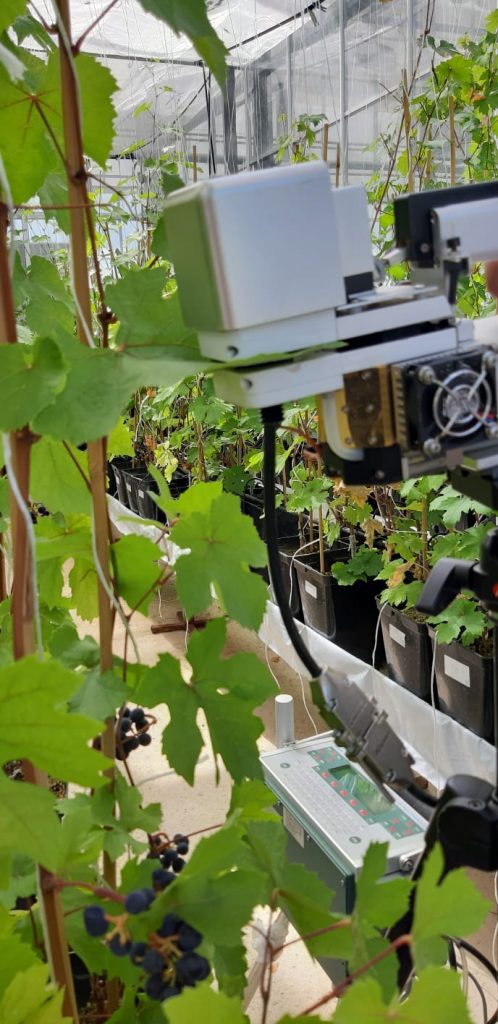To verify the success of virus transmission by grafting, we used ELISA (Enzyme-linked immunosorbent assay) method for the detection of GLRaV-3 virus in the Microbiological laboratory. It is a serological method that enables the detection of viral antigens in a sample if the virus titar is satisfactory. Although we have adopted the method, the preferred time of virus detection in the plant is winter, and the sample type phloem tissue, so we will repeat this testing in the winter period in the dormant phase of grapevine plants.
In the meantime, we inoculated a small number of healthy indicator plants with selected GLRaV-3 isolates from the field. The type of grafting technique was “green grafting”. After only two days, the buds from the inserted plants began to grow, what guarantees virus transmission from the donor plant to the indicator host.
In the second half of July, we began to measure the photosynthesis in the experimental plants. Hopefully, infected plants will show differences in photosynthetic activity compared to control uninfected plants. We also hope for differences in photosynthesis activity between different GLRaV-3 isolates as well as between different host plants infected with the same isolate. Significant…?! It is to be seen.. 🙂
